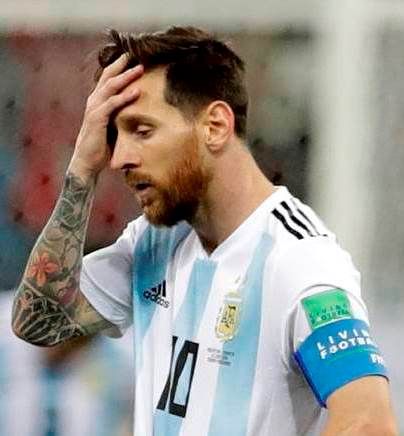|
The benign man-in-the-moon face of Andrés Iniesta has aged, showing new crevices and patches of gray through our telescope. He has already left Barcelona, to play a stint at Vissel Kobe, which is in Japan, not Catalonia. He is leaving a calling card in this World Cup, the knack of completing passes and creating goals at the height of competition. Take a good look at Iniesta, before his lunar orbit takes him across the world. Iniesta – 5 foot, 7 inches – has been the engine of one of the great clubs of the world, playing a few matches for Barca in 2002-3 and becoming a regular in 2004-5, and also helping make Spain the World Cup champion in 2010, with his goal in the 116th minute, four minutes from the dreaded shootout. Iconic players do not always win World Cups, even players of great style and imagination. Just a few names off the top of my addled brain: Sócrates, Platini, Baggio. Any given World Cup can be the Last Chance Saloon in the western movies. In that chippy 2010 final, Iniesta stopped passing for a moment and poked a goal past a Dutch keeper. In a game or five he will bid adios (or adéu, in Catalan) and go to Japan. But first there is this World Cup. Iniesta helped Spain make 803 passes in its first 90 minutes against Portugal, a draw because of Cristiano Ronald. Iniesta then helped Spain make 789 passes in a victory over Iran. One of those passes found Diego Costa in front of the goal, and with the help of a pinball exchange with a frantic defender, Costa scored. Iniesta then came off early, to rest his 34-year-old body. Spain plays Morocco on Monday. The best way to appreciate Iniesta is to see what Lionel Messi is not, without him. Messi is one of the great players of our time, a scoring weapon, who intelligently finds the right spot, or has the right spot find him. However, to appreciate Messi, one must also appreciate the player who was almost always there in his club years at Barca. Messi first played for Barca in 2004-5 but became a regular in 2006-7. Many of his goals were set up by the tiki-taka style, with its Dutch roots, adopted by Barca and also the Spanish national team. On the current Argentina team, there is no dark Maradona will to cheat and win, no style, and no Iniesta. Argentina went down hard, 3-0, to Croatia on Thursday. Croatia came out nasty, and Argentina had no answer but to get nasty back. In all that foot-stomping and spine-jangling, poor Lionel Messi looked lost. His most definitive move all day was bolting off the field and into the runway after the final whistle. Argentina’s next match is Tuesday against Nigeria. Barring some statistical madness, Argentina and Messi will then be done. He turns 31 on June 24, and this could be it for him in the World Cup. Lionel Messi will always have Barcelona -- and, dare I say it, Andrés Iniesta. * * * A very knowledgeable and layered look at Messi and Argentina, from Rory Smith, the British expert now writing for the NYT: https://www.nytimes.com/2018/06/22/sports/world-cup/argentina-lionel-messi.html
John McDermott
6/22/2018 11:47:50 am
Another player who makes it possible for Messi to Messi for Barça WAS on the field last night-unfortunately Ivan Rakitić was playing for Croatia and teamed with Luka Modrić to destroy Argentina.
George Vecsey
6/22/2018 01:14:11 pm
John, totally agree. I like Rakitic, versatile and tough.
Brian Savin
6/23/2018 08:29:09 am
This seems to be confirming some old farm wisdom in my part of the world: When two oxen have been harnessed together as a team for many years, and one dies, you might as well shoot the other. It will never work well with any other.....
George Vecsey
6/23/2018 10:52:02 am
Brian, you could also say this is a reminder that the level of football is higher at top of club competition than in national play. That would back up your earlier comments about a lucrative plan for a club world cup. I am against it -- but any team that can recruit strikers, keepers, playmakers, etc.,-- including doubles for two games a week -- is liable to be superior to almost any national team. And style of play more cohesive. Imagine, a Spaniard and an Argentine (and players from other nations) teaming up for Barca, or importing a portuguese star to lead Real madrid. Still not a good reason for diminishing the World Cup....but Iniesta and Messi together was a glorious pairing.,
bruce
6/23/2018 12:09:13 pm
george, Comments are closed.
|
Categories
All
|











